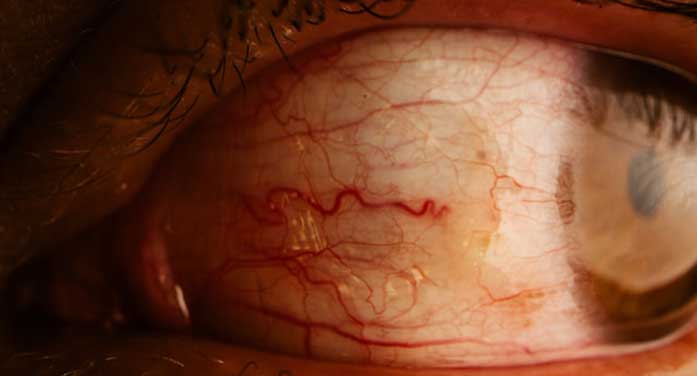
PulseMedica’s made-in-Alberta imaging technology and devices target age-related macular degeneration and other eye diseases. Photo by Christopher Ott
An Edmonton-based company is developing new imaging technology to treat retinal diseases and give hope to the millions of people who suffer from them.
PulseMedica has only been operating for about a year, but its preliminary research is so promising that the collaborators hope to have some of their devices to market by 2023.
More than 190 million people worldwide suffer from age-related macular degeneration (AMD), making it the leading cause of blindness. There is no cure, only treatments to slow the progression.
Other retinal diseases – including glaucoma, retinoblastoma and diabetic retinopathy – affect hundreds of millions more. The human and economic impacts of these conditions are staggering.
PulseMedica founder and U of A graduate Nir Katchinskiy worked with ultra-fast, ultra-precise femtosecond lasers while completing his PhD in electrical biomedical engineering at the U of A. “We were doing really cool things in the lab, but I started to think, ‘How do we take this into the real world, how do we use it so we can actually help people?’”
Ophthalmic imaging was an obvious direction, said Katchinskiy, because the eye is the perfect medium for lasers. He began learning about retinal diseases, especially AMD, and set out to build tools to offer a more permanent solution than current treatments. The laser treatments PulseMedica is developing would have to be repeated as necessary, but likely no more than twice a year.
There are two forms of AMD, both most common in people over 60 years old. Ninety per cent of AMD cases are the dry stage and there is little therapy available other than a regimen of vitamins. Dry-stage AMD tends to worsen slowly, and most patients retain some of their vision.
Permanent vision loss usually happens with the wet form of AMD, when new blood vessels start growing underneath the retina. The main treatment is a series of painful injections into the eye every four to six weeks. Almost all patients with wet-stage AMD progress from dry-stage cases, so treating the disease earlier with a better approach could prevent total vision loss.
Some retinal specialists do use lasers to treat AMD patients, but the tool they use to deliver the laser makes the treatments imprecise and difficult to perform. Damage to the retina often results.
PulseMedica’s first invention is a better tool for delivering laser treatments. It’s a 3-D retinal scanning head that uses machine-learning algorithms to map the regions of the eye associated with retinal disease, followed by precise treatment using current laser technology.
The next stage will be the addition of new-generation femtosecond lasers to the scanning head, which would allow clinicians to do more precise laser surgery on people with dry-stage AMD. This would be a breakthrough for an enormous group of patients and would thrust PulseMedica into a strong position in the $48-billion global market for ophthalmology devices.
Depending on fundraising, grants and meeting Health Canada (and eventually FDA) regulatory requirements for medical devices, Katchinskiy hopes the more advanced stage of their technology could be ready by 2024 or 2025, if not sooner.
PulseMedica successfully attracted $1 million in its initial round of fundraising and is hoping to raise significantly more this year, said co-founder Eric Martin, a registered nurse and recent U of A MBA graduate. The money will allow them to continue building up their team – which is about to grow to eight full-time employees – and to validate their technology with animal studies and eventually human trials.
Martin said that once all the regulatory hurdles are passed, they hope to partner with retinal surgeons across the country to try out PulseMedica’s technology in their practices.
| By Keri Sweetman
This article was submitted by the University of Alberta’s Folio online magazine. The University of Alberta is a Troy Media Editorial Content Provider Partner.
© Troy Media
Troy Media is an editorial content provider to media outlets and its own hosted community news outlets across Canada.




